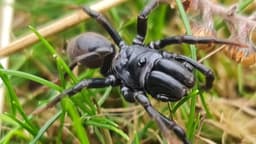Home / Environment / Drones Revolutionize Farne Islands' Seal Monitoring, Pup Numbers Soar
Drones Revolutionize Farne Islands' Seal Monitoring, Pup Numbers Soar
12 Nov
Summary
- Farne Islands host world's longest-running grey seal population study since 1952
- Pup numbers increased from 500 in 1952 to 3,624 in 2024
- Drones now used to monitor seals, replacing manual counting methods

The Farne Islands, located off the Northumberland coast, have been the site of the world's longest-running grey seal population study since 1952. Over the past 73 years, wildlife experts have closely monitored the number of pups born on the rocky archipelago, witnessing a remarkable increase from around 500 pups in 1952 to 3,624 in 2024.
The study, which was initially conducted by National Trust rangers who would physically count and mark the seals, has undergone a significant transformation. Today, the monitoring process is carried out from 75 meters above using drones, a modern method that is considered less intrusive to the seals and less dangerous for the rangers.
The Farne Islands provide an ideal habitat for the grey seals, with a range of rocky beaches, sand, and grass, as well as an abundance of food and relatively little interference from humans. The arrival of the first pup each year is a special moment, signaling the start of the seal monitoring season and the importance of the islands as a sanctuary for wildlife.
The data collected from the annual seal survey is analyzed by Newcastle University, with the results expected in the spring. This long-term study has been instrumental in shaping modern conservation efforts in Northumberland, and the continued monitoring of the grey seal population on the Farne Islands remains a testament to the resilience of this species in the face of environmental challenges.




